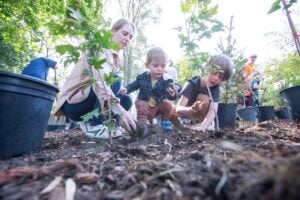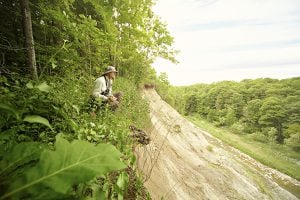“She’s really curious about all this kind of stuff, so we brought her in,” said Salima Dixon. “I’m not very handsy, but [we do it] because of my daughter.”
Participants planted the mini forest using the Miyawaki method. Miyawaki forests are densely planted forests of native species from four different categories: canopy, sub-canopy, small-understory trees and shrubs. Trees are planted in close proximity to increase competition for access to light, causing them to grow upwards faster. Native plants also attract other species, such as pollinators, who rely on them during various stages of their lifecycle. The resulting ecosystem is small in size but rich in life.
Elaine Decker, a former teacher, was first introduced to the Miyawaki method when she participated in planting a Miyawkai forest at Richmond Secondary School.
“What I like best about the engagement of the Miyawaki forest, particularly in schools, is that the students plant the trees, and they grow up together,” said Decker. “These events can open up a conversation about what can you imagine your life like without a tree?” She believes these initiatives teach children about the value of the natural world because each child learns to care for the trees they’ve planted.
Planting trees also builds relationships between community members. “[We are] a community of people, planting a community of trees,” said Decker.
The mini forest planting event was a collaborative effort, and the resulting forest ecosystem will continue to foster relationships between the community and the environment as it grows.






